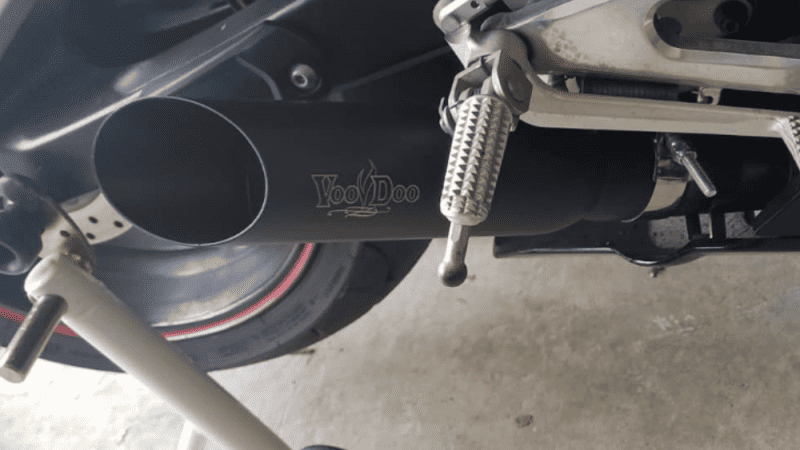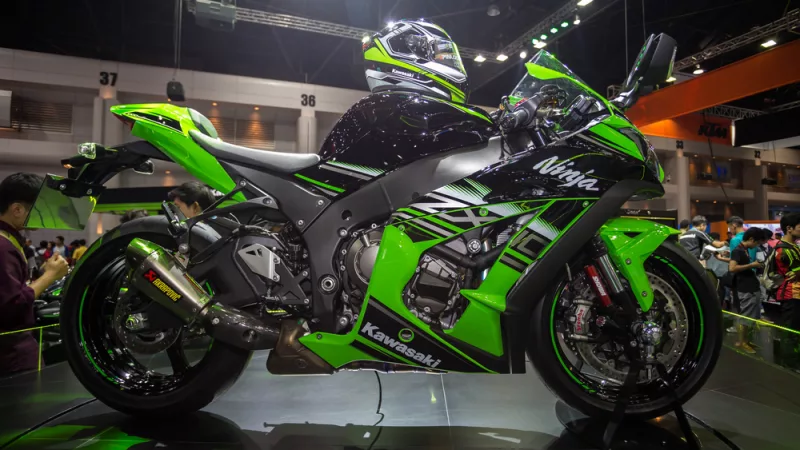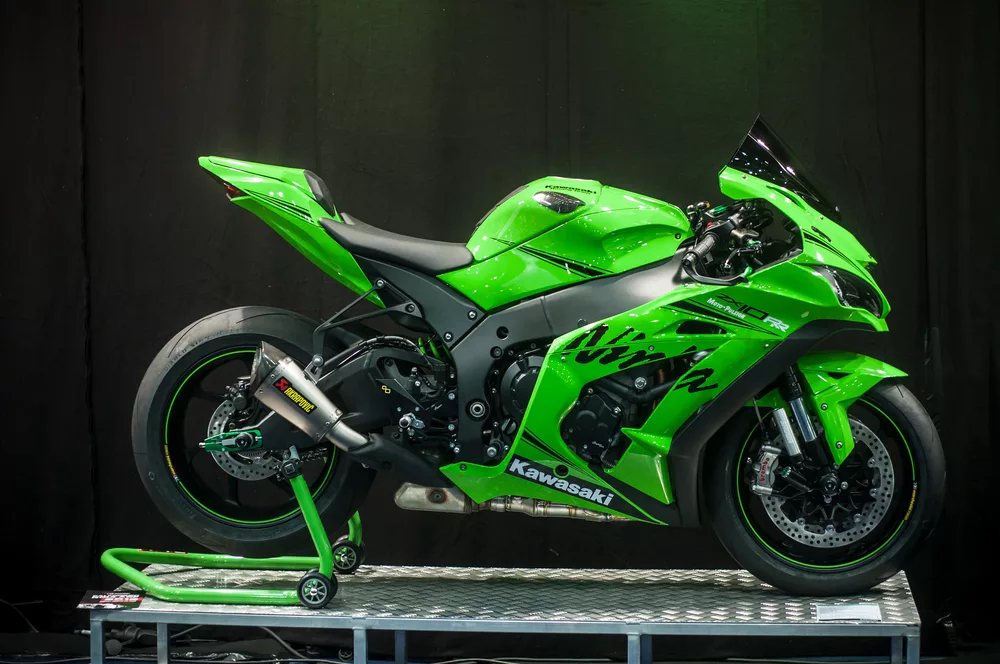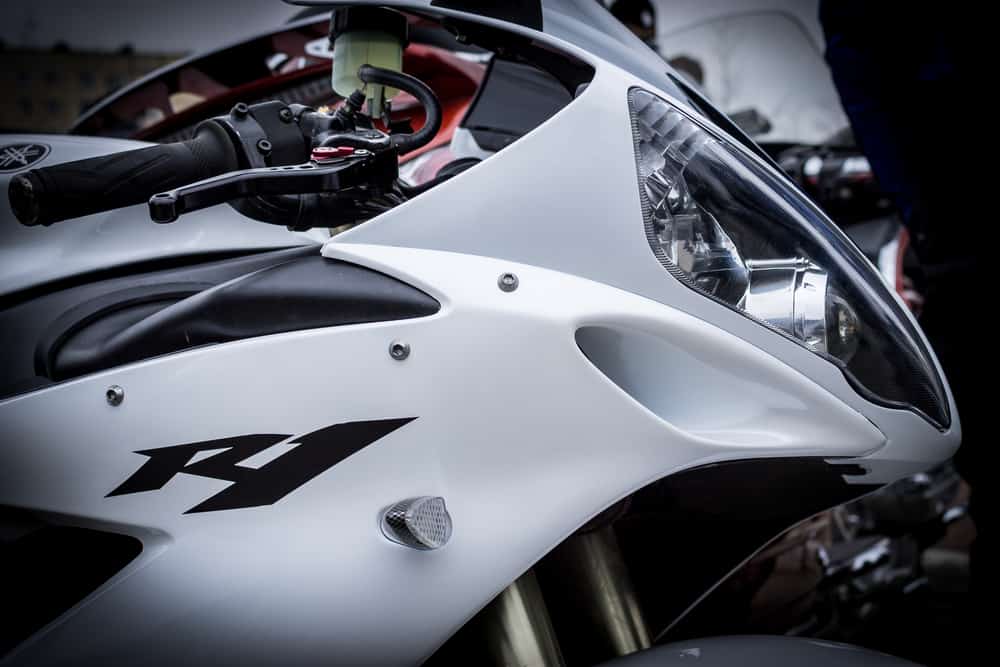Road rash isn’t a punchline to a joke about bad motorcycle handling or old video game. Road rash, also called “friction burn,” is a serious injury. The severity of the wound is measured by degrees, the same as you would a chemical or fire burn. Since the skin is the largest organ of our bodies, getting road rash opens you up to other vulnerabilities, such as infection. But there is more to understand about road rash than these points.
Let’s look at this serious injury that can happen to anyone and learn how to classify and treat various types of road rash.
The Different Types of Road Rash
Not every bout of road rash is created equal. There are three main types of road rash:
- Avulsion – the skin is scraped away. Sometimes fat, muscle, and even bone will be exposed.
- Compression – where the body is caught between two objects, such as the motorcycle and the road. This results in bruising, broken bones, and damaged muscle.
- Open wound – usually require stitches. Open wound road rash might even require skin grafting.
Aside from the 3 different types, there are 3 degrees of damage:
- First degree – the first layer of the skin is red. Does not require medical treatment and will heal well enough on its own.
- Second degree – the first layer of skin, known as the epidermis, is broken. There can be bleeding and debris stuck in the wound. Usually requires little medical treatment and can heal with no scarring or lasting damage.
- Third degree – skin has been peeled away, leaving tissue, fat and sometimes bone exposed. Victims often need skin grafting.
The degrees of the crash depends on factors such as the force of the impact with the ground, the type of surface where the crash takes place, and whether safety gear was equipped.
Road rash will often occur in places that come in contact with the abrasive surface, either when attempting to catch oneself or when rolling or getting dragged. The outside of the legs, knees, palms, thighs, shoulders, and face are usually where road rash occurs.
Complications of Road Rash
Seek medical treatment immediately if you experience any of the following with road rash:
- Severe pain
- Inability to move affected region
- Cuts on the face that are larger than a ¼ inch
- Cuts on the body that are larger than a ½ inch
- Bleeding doesn’t stop
- Gaping wound remains opened with you relax the body
- Fat is visible in the exposed tissues
- Road rash is paired with other injuries, including possible concussion or broken bones.
Any open wound should be treated with antibiotics within six hours. Otherwise, you are at risk of infection.
Treatment and Recovery From Road Rash
Depending on the severity of the road rash, you can oftentimes treat it yourself. In that event, do the following:
- Stop any bleeding.
- Wash your hands with soap and water.
- Rinse the wound thoroughly.
- Wash the wound with soap, water, and then use some witch hazel.
- Apply a topical antibiotic.
- Bandage the wound.
- Change the dressing.
Note: During the recovery, the skin will undergo healing from the deepest layers to the top. It might get scabs. Do not pick the scabs. Instead, continue changing the bandages and applying topical antibiotics. Once the oozing stops, you can use petroleum jelly to keep the skin supple and lessen the scarring.
If you end up going to the doctor because of a deep wound, the medical professional might recommend using ibuprofen, a non-steroidal anti-inflammatory drug (NSAID), acetaminophen, or naproxen to deal with the pain.
Remember that because the skin has been opened by abrasion, you could be at risk for infection. Consider getting a tetanus shot. Tetanus boosters last 10 years, so if you had an injury where the epidermis or dermis of the skin has been injured, tetanus bacteria can enter the wound. At any time symptoms of infection begin, such as redness, swelling, warm or hot skin around the injury, tenderness, pain, or bloody ooze or yellowish pus, you could have an infection. Make sure to get to a doctor immediately.
Hopefully, you should now have an understanding of road rash and how serious it can be. Don’t ignore severe injuries after a fall. Drive safe and stay safe, so you can keep riding!
You Might also like
-
How to Choose the Right Motorcycle Jacket
The motorcycle jacket is one of the most iconic artifacts of biker culture, especially in public consciousness. When people picture a motorcyclist, they tend to envision someone clad in a well-made, well-fitted leather jacket.
With the continuous advancement of material sciences, the constant diversification of motorcycles themselves, and the rather varied climates of a global society, there are a plethora of jackets to choose from.
You’re bound to find the jacket that’s ideal for you, but there are a few variables to consider, such as what you find comfortable, the climates you’ll be riding in, and the type of motorcycle you’re going to use.
No products found.
The Four Motorcycle Jacket Styles
There are basically for style groups, when it comes to these jackets – Cruiser, Racing, Sport/Street and Adventure Touring/Dual Sport. Each of these has its own strengths, making them ideal for a specific riding style. Surprisingly, no single type of material/textile is standard for any given style of jacket either.
- Cruiser – This is the classic motorcycle jacket that most picture – the icon, the stereotype. While most commonly seen in leather, they’re also available in many other styles, with a focus on comfort and aesthetic. These are ideal for casual riders and those that use their motorcycle as transportation going about their daily lives.
- Racing – Racing jackets are distinctive for their tight fit and somewhat “space age” appearance. The tight fit is to prevent wind resistance, and the distinct appearance is due to flex panels designed to allow mobility while providing padding against abrasions from dangerous high-speed offs. They tend to have a narrower collar, and a zipper to fasten to racing pants (preventing ride up).
- Sport/Street – These jackets are a casual modification of racing jackets, taking the slower speeds into account. They’re distinguished by the less prominent flex panels and the looser fit focusing on comfort. Seasonal jackets of this sort also include insulation and ventilation to help keep the rider cool or warm in harsh conditions.
- Adventure/Dual Sport – This is a less common style of jacket, used primarily by those whom go on long rides across varied, often rough climates and terrains. They look like nothing more than a survival jacket imitating a racing jacket, with pockets for gear, layers of insulation and impact padding, and a form-hugging design with an additional fastening around the neck. These are ideal for winter riding, or those long trans-continental adventures.
No products found.
Important Motorcycle Jacket Factors To Consider
There are important factors to consider, which will determine the material you choose, and the style of jacket most suited to your needs.
- Leather or Textile – The first decision you’ll want to make is if you want leather or textile. Leather has a classic look, and many regard it as quite comfortable. However, its real strength is in its resistance to abrasion. However, for comfort and versatility in multiple climates and weather conditions, textiles tend to outperform it. This all comes down to whether you want comfort in various climates, or wish to focus on the durability of leather.
- Visibility/Reflectivity – While many would argue that subtlety is a sign of good everyday design, a jacket that catches the eye can actually be a major boon to safety. You want people to see you, and be aware of your presence and location on the road!
- Liners and Armor/Padding – If you ride in a temperate area with both hot and cold weather, you may want to look for a jacket with removable or all-weather lining that can help keep you warm in the winter, without the jacket cooking you in the summer. Similarly, even if you’re not a dare devil (and you shouldn’t be!), focusing on padding/armor around the chest, back and shoulders is also important, as these are areas where damage can be the worst if you have a nasty off.
- Fitment – Finally, you want a jacket that fits you well, and comfortably. It can be hard to find one that’s a perfect fit, but many styles of jacket have fitment adjustments on the waist and slides on the sleeves, which provide just the right amount of hug or slack for your personal comfort standards. You don’t want to wear a jacket that’s too tight or constrictive, cutting off circulation. The fatigue from this can lead to serious dangers.
To learn more about the different styles of jackets, which ones suit which styles of riding, and much more about the adventurous world of motorbiking, subscribe to my YouTube channel today!
No products found.
-
Everything You Need to Know About Shorty Motorcycle Exhausts
The rumble of a motorcycle engine is a sound that stirs the soul of many riders. But sometimes, the stock exhaust just doesn’t cut it. Enter shorty exhausts, a popular aftermarket modification that promises a bolder sound and a sleeker look. But are they right for you? This guide delves into everything you need to know about shorty motorcycle exhausts, helping you make an informed decision.
Key Takeaways
- Shorty exhausts, also known as slip-on exhausts, offer a sleeker look and potentially louder sound compared to stock exhausts.
- Consider increased noise levels, potential performance changes, and legal compliance before installation.
- Research specific exhaust models for your motorcycle to understand performance impact.
- Explore alternative exhaust options like full systems or baffles for additional considerations.
Comparison Table: Shorty Exhausts vs. Stock Exhausts
Feature Shorty Exhaust Stock Exhaust Appearance Sleeker, more aggressive Bulky, standard design Weight Lighter Heavier Sound Louder (may not be legal) Quieter Performance May improve or decrease (research specific model) Consistent, designed for specific motorcycle Cost Varies Usually included in the motorcycle price No products found.
What are Shorty Exhausts?
Shorty exhausts, also known as slip-on exhausts, are aftermarket mufflers that replace the stock exhaust on your motorcycle. They are significantly shorter and lighter than the factory exhaust, offering a more compact and aggressive appearance. However, it’s crucial to remember that they are often louder and may not comply with noise regulations in all areas.
Why Choose a Shorty Exhaust?
Riders choose shorty exhausts for several reasons:
- Enhanced aesthetics: Shorty exhausts can significantly improve the look of your motorcycle, giving it a more customized and aggressive appearance.
- Lighter weight: The reduced size and weight of a shorty exhaust can contribute to a slight improvement in handling and performance.
- Potentially louder sound: For some riders, the deeper and louder sound of a shorty exhaust adds to the riding experience.
No products found.
Things to Consider Before Installing a Shorty Exhaust:
While shorty exhausts offer potential benefits, there are also drawbacks to consider:
- Increased noise: As mentioned earlier, shorty exhausts are often significantly louder than stock exhausts and may not be legal in all areas. Always check local regulations before installing one.
- Potential performance changes: While some shorty exhausts can improve power delivery, others may negatively affect performance due to backpressure changes. Researching specific models and their impact on your motorcycle is crucial.
- Potential for increased heat: Due to their shorter design, shorty exhausts may direct more heat towards the rider’s legs. Consider this factor, especially for long rides or hot climates.
No products found.
Installation:
Installing a shorty exhaust can often be done at home with basic tools and mechanical knowledge. However, if you’re not comfortable doing it yourself, it’s recommended to seek professional help from a qualified mechanic. The provided reference (How To Install A Voodoo Slip-On Exhaust) offers a helpful guide on installing a specific shorty exhaust model.
The Final Verdict
Shorty exhausts offer a unique combination of style, sound, and potential performance gains for motorcycle enthusiasts. However, it’s essential to consider the potential drawbacks, such as increased noise and potential legal implications, before making a decision. Remember to prioritize safety and ensure your chosen exhaust complies with local regulations.
Additional Considerations:
- Legality: As the provided article mentions, exhaust modifications might not be legal in all areas. Always check local regulations to ensure compliance.
- Performance impact: While the article mentions potential performance changes, it’s important to note that these can vary depending on the specific motorcycle and exhaust model. Consulting a mechanic or researching specific exhausts for your motorcycle is recommended for a more accurate assessment.
- Alternatives: Shorty exhausts aren’t the only option for modifying your motorcycle’s exhaust. Consider researching other options like full exhaust systems or muffler baffles to find the best fit for your needs and preferences.
By carefully considering all the information presented here, you can make an informed decision about whether a shorty exhaust is the right choice for your motorcycle.
No products found.
6 FAQs About Shorty Exhausts
1. Will a shorty exhaust make my motorcycle faster?
Not necessarily. While some shorty exhausts can improve power delivery, others might negatively impact performance due to backpressure changes. Researching specific models and their impact on your motorcycle is crucial.
2. Are shorty exhausts street legal?
It depends on local regulations. Shorty exhausts are often louder than stock exhausts and might not comply with noise ordinances in some areas. Always check local regulations before installing one.
3. Can I install a shorty exhaust myself?
Installation can often be done at home with basic tools and mechanical knowledge. However, if you’re unsure, seek professional help from a qualified mechanic.
4. What are the alternatives to shorty exhausts?
Consider full exhaust systems for comprehensive performance upgrades or muffler baffles for a slightly modified sound without significant visual changes.
5. How much do shorty exhausts cost?
Prices vary depending on the brand, model, and material. Expect to pay more for well-known brands and high-quality materials.
6. Where can I find shorty exhausts for my motorcycle?
Many motorcycle parts retailers and online stores offer a wide variety of shorty exhausts. Ensure the chosen exhaust is compatible with your specific motorcycle model.
No products found.
-
The Great Debate: Kawasaki Ninja vs. Yamaha R1
Sportbikes are some of the most popular and high-performance motorcycles on the road. With their sleek designs, powerful engines, and top-notch handling, they offer a thrilling and unique riding experience. Two of the most well-known sportbike models are the Kawasaki Ninja and the Yamaha R1. Both of these bikes are highly regarded in the sportbike community, but which one is the better choice? In this blog, we’ll take a closer look at the Kawasaki Ninja and Yamaha R1, and compare and contrast their features, performance, and overall value.
Kawasaki Ninja vs. Yamaha R1: Which Sportbike Reigns Supreme?
Kawasaki Ninja: A Closer Look The Kawasaki Ninja is a popular and well-regarded sportbike, known for its excellent handling and high-performance capabilities. With its lightweight frame and aerodynamic design, the Ninja provides quick acceleration and nimble handling. It also features a powerful engine, which delivers smooth and responsive power. Whether you’re commuting to work or hitting the back roads for a weekend ride, the Ninja is a great choice for any rider.
The Kawasaki Ninja and Yamaha R1 are two of the most popular and highly regarded sportbikes on the market. Both bikes offer a thrilling riding experience, with their powerful engines, top-notch handling, and sleek designs. But, which one is the better choice for riders? To answer this question, we’ll take a closer look at the key features, performance, and overall value of each bike.
Power and Performance: When it comes to power and performance, both the Kawasaki Ninja and Yamaha R1 deliver. The Ninja features a lightweight frame and aerodynamic design, which provide quick acceleration and nimble handling. The R1, on the other hand, boasts cutting-edge technology and advanced engineering, which provide exceptional power and handling capabilities. Ultimately, both bikes offer high-performance capabilities, but the Yamaha R1 may offer a more thrilling and intense riding experience for those who are looking for more power.
Features and Technology: The Yamaha R1 is known for its advanced electronics suite, which provides a range of features and functions to help riders get the most out of their bike. This includes traction control, power modes, and other advanced systems that can help riders customize their riding experience. The Kawasaki Ninja also offers some advanced technology, including a high-performance engine, but it may not be as feature-rich as the Yamaha R1.
Value for Money: Both the Kawasaki Ninja and Yamaha R1 are high-performance machines that offer excellent value for their price. However, there may be some differences in cost and features depending on the specific model you choose. When comparing the two, it’s important to consider the overall cost of ownership, including insurance, maintenance, and other expenses. The Kawasaki Ninja may offer better value for money for riders who are looking for a more budget-friendly option, while the Yamaha R1 may be a better choice for those who are willing to invest in a more advanced and feature-rich bike.
Thoughts:
The choice between the Kawasaki Ninja and Yamaha R1 comes down to personal preference and individual riding needs. Both bikes offer excellent performance, handling, and power, but there are some key differences in terms of features and value for money. If you’re looking for a budget-friendly option with good performance, the Kawasaki Ninja may be the better choice for you. But, if you’re looking for a more intense riding experience and advanced technology, the Yamaha R1 may be the way to go.
Kawasaki Ninja Model Overview
General Info
- Price: $18,199 USD / $20,899 CAD
- Key Features:
- Powerful 998cc In-line Four engine
- Lightweight chassis for superior handling
- Showa suspension and Brembo brake system
- IMU-enhanced electronics package
Key Specs
- Engine: 998cc, liquid-cooled, 4-stroke, DOHC 16-valve in-line four
- Power: 203 hp
- Torque: 82.5 lb-ft
- Dry Weight: 456 lb (207 kg)
- Seat Height: 32.9 in (835 mm)
Discover the Power and Performance of the Kawasaki Ninja
The Kawasaki Ninja is a well-known and highly regarded sportbike that offers a thrilling riding experience for riders of all levels. With its powerful engine, sleek design, and advanced technology, the Kawasaki Ninja has been a favorite among sportbike enthusiasts for many years. In this article, we’ll take a closer look at what makes the Kawasaki Ninja such a powerful and capable machine.
Engine and Power: The heart of the Kawasaki Ninja is its powerful engine, which provides exceptional acceleration and speed. Whether you’re commuting to work or tearing up the track, the Ninja’s engine delivers the power you need to get the job done. The Ninja features a lightweight frame and aerodynamic design, which work together to create a powerful and responsive machine that is both fast and nimble.
Handling and Suspension: The Kawasaki Ninja is known for its exceptional handling and suspension capabilities. The bike’s lightweight frame and advanced suspension system provide a smooth and stable ride, even at high speeds. Whether you’re carving through the turns or cruising down the highway, the Ninja delivers a comfortable and controlled ride that will keep you grinning from ear to ear.
Advanced Technology: The Kawasaki Ninja is also equipped with a range of advanced technology features that help riders get the most out of their bike. This includes traction control, power modes, and other advanced systems that allow riders to customize their riding experience. With these advanced technologies, riders can fine-tune their bike’s performance to match their riding style and preferences.
Design and Style: In addition to its powerful performance and advanced technology, the Kawasaki Ninja also stands out with its sleek and stylish design. The bike’s aerodynamic bodywork and aggressive lines give it a distinctive look that sets it apart from other sportbikes on the market. Whether you’re parked at the track or cruising down the street, the Kawasaki Ninja is sure to turn heads.
Thoughts:
The Kawasaki Ninja is a powerful and capable sportbike that offers riders a thrilling and enjoyable riding experience. With its powerful engine, exceptional handling, advanced technology, and stylish design, the Kawasaki Ninja is the ultimate choice for sportbike enthusiasts who demand the best. Whether you’re a seasoned rider or just starting out, the Kawasaki Ninja is sure to provide you with the power and performance you need to take your riding to the next level.
Experience the Cutting-Edge Technology and Thrilling Performance of the Yamaha R1
Comparing the Kawasaki Ninja and Yamaha R1 When it comes to comparing the Kawasaki Ninja and Yamaha R1, there are a number of factors to consider. Both bikes offer excellent performance, handling, and power, but there are some differences that set them apart. For example, the Yamaha R1 is known for its advanced electronics and cutting-edge technology, while the Kawasaki Ninja is known for its lighter weight and nimble handling. Ultimately, the choice between the two comes down to personal preference and individual riding needs.
The Yamaha R1 is a high-performance sportbike that offers riders a thrilling and unforgettable riding experience. With its cutting-edge technology, advanced engineering, and exceptional power and handling, the Yamaha R1 is one of the most sought-after sportbikes on the market. In this article, we’ll take a closer look at what makes the Yamaha R1 so special and what you can expect from this exceptional machine.
Performance and Power: The Yamaha R1 is designed to deliver high-performance and power, with its cutting-edge engineering and advanced technology. The bike features a powerful engine and lightweight frame, which work together to provide exceptional acceleration and speed. Whether you’re commuting to work or tearing up the track, the Yamaha R1 delivers the power and performance you need to get the job done.
Advanced Technology: One of the key features of the Yamaha R1 is its advanced electronics suite, which provides a range of features and functions to help riders get the most out of their bike. This includes traction control, power modes, and other advanced systems that allow riders to customize their riding experience. With these advanced technologies, riders can fine-tune their bike’s performance to match their riding style and preferences.
Handling and Suspension: In addition to its power and performance, the Yamaha R1 also offers exceptional handling and suspension capabilities. The bike’s advanced suspension system and lightweight frame provide a smooth and stable ride, even at high speeds. Whether you’re carving through the turns or cruising down the highway, the Yamaha R1 delivers a comfortable and controlled ride that will keep you grinning from ear to ear.
Design and Style: The Yamaha R1 is not only a high-performance machine, but it’s also a stylish and sleek sportbike that is sure to turn heads. The bike’s aerodynamic bodywork and aggressive lines give it a distinctive look that sets it apart from other sportbikes on the market. Whether you’re parked at the track or cruising down the street, the Yamaha R1 is sure to make a statement.
Thoughts:
The Yamaha R1 is a high-performance sportbike that offers riders a thrilling and unforgettable riding experience. With its cutting-edge technology, advanced engineering, and exceptional power and handling, the Yamaha R1 is the ultimate choice for sportbike enthusiasts who demand the best. Whether you’re a seasoned rider or just starting out, the Yamaha R1 is sure to provide you with the power, performance, and technology you need to take your riding to the next level.
Yamaha R1 Model Overview
General Info
- Price: $17,599 USD / $22,199 CAD
- Key Features:
- Yamaha Quickshift is standard
- Dynamic, adjustable suspension
- Advanced launch control system
Key Specs
- Engine Type: 998cc, liquid-cooled inline 4 cylinder DOHC; 16 valves
- Horsepower: 198 HP
- Torque: 83 lb-ft
- Wet Weight: 443 lbs (201 kg)
- Seat Height: 33.7 inches (855 mm)
Kawasaki Ninja vs. Yamaha R1: Comparing the Pros and Cons
Value for Money Another important factor to consider when choosing between the Kawasaki Ninja and Yamaha R1 is value for money. Both bikes are high-performance machines that offer excellent value for their price, but there may be some differences in cost and features depending on the specific model you choose. When comparing the two, it’s important to consider the overall cost of ownership, including insurance, maintenance, and other expenses.
When it comes to high-performance sportbikes, the Kawasaki Ninja and Yamaha R1 are two of the most popular and well-regarded models on the market. Both bikes offer exceptional power, handling, and technology, making it difficult to decide which one is right for you. In this article, we’ll take a closer look at the pros and cons of each bike to help you make an informed decision.
Kawasaki Ninja Pros:
- Power: The Kawasaki Ninja is known for its powerful engine and exceptional acceleration, making it a great choice for riders who demand high-performance and speed.
- Lightweight: The Ninja’s lightweight design makes it nimble and easy to handle, even at high speeds.
- Price: Compared to other high-performance sportbikes, the Kawasaki Ninja is often more affordable, making it a great choice for riders on a budget.
Kawasaki Ninja Cons:
- Vibration: Some riders have reported significant vibration from the Ninja’s engine, which can be uncomfortable for some riders.
- Brakes: While the Ninja’s braking system is capable, it may not provide the same level of stopping power as other high-performance sportbikes.
Yamaha R1 Pros:
- Technology: The Yamaha R1 features advanced electronics and technology that provide riders with a range of customization options and advanced features.
- Handling: The R1’s advanced suspension system and lightweight frame make it easy to handle and provide a smooth and stable ride, even at high speeds.
- Design: The Yamaha R1 has a distinctive, aggressive design that sets it apart from other sportbikes on the market.
Yamaha R1 Cons:
- Price: Compared to other sportbikes in its class, the Yamaha R1 is often more expensive, making it less accessible for some riders.
- Maintenance: The R1’s advanced technology and electronics may require more maintenance and upkeep than other sportbikes.
Thoughts:
The Kawasaki Ninja and Yamaha R1 are two of the best high-performance sportbikes on the market. Both bikes offer exceptional power, handling, and technology, making it difficult to decide which one is right for you. Ultimately, the choice between the two will come down to your personal preferences, riding style, and budget. Whether you choose the Kawasaki Ninja or the Yamaha R1, you can be sure that you’re getting a high-quality machine that will provide you with a thrilling and unforgettable riding experience.
Kawasaki Ninja vs. Yamaha R1: Which Sportbike Offers the Best Value for Money?
When it comes to high-performance sportbikes, the Kawasaki Ninja and Yamaha R1 are two of the most popular models on the market. Both bikes offer exceptional power, handling, and technology, but one key difference between them is their price. In this article, we’ll take a closer look at which bike offers the best value for money.
Kawasaki Ninja:
- Price: Compared to other high-performance sportbikes, the Kawasaki Ninja is often more affordable, making it a great choice for riders on a budget. This can also be seen as a pro for the Ninja when it comes to value for money.
- Performance: Despite its lower price, the Kawasaki Ninja still offers high-performance and speed, making it a great choice for riders who want a powerful bike without breaking the bank.
- Maintenance: The Ninja is relatively easy to maintain, which can help keep costs down over time.
Yamaha R1:
- Price: As one of the most advanced sportbikes on the market, the Yamaha R1 is often more expensive than other models in its class. This higher price tag may make it less accessible for some riders and less of a value for money option.
- Technology: The R1 features advanced electronics and technology that provide riders with a range of customization options and advanced features. However, this advanced technology also means that the R1 may require more maintenance and upkeep than other sportbikes.
- Performance: Despite its higher price, the Yamaha R1 offers exceptional power, handling, and technology, making it a great choice for riders who demand the best.
Thoughts:
Both the Kawasaki Ninja and Yamaha R1 offer high-performance and exceptional power, but when it comes to value for money, the Kawasaki Ninja is the clear winner. With its lower price and easier maintenance, the Ninja provides riders with a great combination of performance and affordability. However, if you’re looking for the latest technology and cutting-edge features, the Yamaha R1 may be the better choice for you, even if it does come at a higher cost. Ultimately, the choice between the two will come down to your personal preferences, riding style, and budget.











One comment on “What Every Rider Should Know About Road Rash”